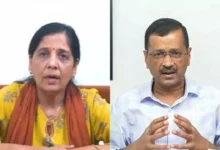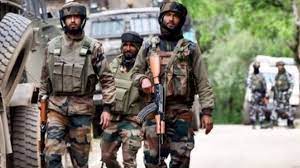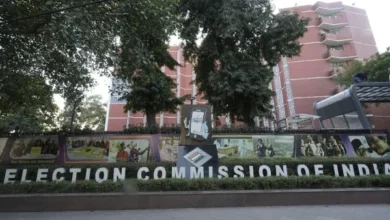Why standing for Akhilesh Yadav in this Lok Sabha election is important
When talking about the Lok Sabha election, Uttar Pradesh needs to come first. Any realistic assessment of polling starts with the 80 seats in the state that has produced nine Prime Ministers for India to this point. More so, given that the BJP won 71 seats in the state in 2014 and 62 seats in 2019, reestablishing the state’s priority on India’s political map.

Five years on, Samajwadi Party president Akhilesh Yadav stands in the way of the BJP’s pursuit of yet another significant victory. This time, the 50-year-old former Congressman is siding with the Congress.
Akhilesh has the chance to use the campaign to further his and his party’s interests, even if the Congress has little influence over its direction in the state and is limited to conjecturing about potential candidates in Amethi and Rae Bareli. This is particularly true given his popularity as the chief minister of the Uttar Pradesh who oversaw the construction of the state’s first highway, the opening of the Lucknow Metro, and the giving out of free computers to deserving students.
Former chief minister of Uttar Pradesh and head of the Samajwadi Party, Akhilesh Yadav.
Will he or won’t he? Even as Smriti Irani begins, Amethi waits for their Rahul response.
However, the chaos that resulted from choosing his candidates for several seats and his desperate attempts to project himself as a Muslim sympathiser have prompted his followers to question if Akhilesh has a solid plan in place before the first round of voting on April 19.
His recent visit to Ghazipur to offer condolences for the passing of Mukhtar Ansari—an attempt to win over the Muslim community’s empathy and support—has confused his supporters, who had thought he was standing up to organized crime and criminals when he served as chief minister from 2012 to 2017. It is also said that Akhilesh went to console Ansari’s family, even though he would have liked to avoid the consecration ceremony of the Ram Mandir temple.
A lost election and the CM who wouldn’t take a truck with criminals
Following the Samajwadi Party’s 224-seat victory in the 403-member House during the 2012 Uttar Pradesh Assembly election, Akhilesh was appointed chief minister, since the party’s founder, Mulayam Singh Yadav, was not doing well. The party had won then thanks in large part to the young son’s appeal and a state-wide cycling yatra.
On March 15, nine days after the results were declared, he was sworn in as Chief Minister. Thousands of people stormed the platform built for the event to honor the occasion, indicating that many party leaders were not happy with his selection. The whole thing collapsed as a result of the disaster, which also destroyed the background, flower pots, garlands, public address system, tables, seats, and microphones.
Akhilesh’s humiliation prompted him to take a position on maintaining law and order and to start projecting an image of himself as someone who was committed to growth. He even went so far as to block the entry of DP Yadav, another ex-convict who is now a politician, into the SP by senior authorities.
In 2016, he went a step further by declining to support the union of Quami Ekta Dal (QED), a group run by the mobster Mukhtar Ansari, who was already serving a prison sentence, with the Samajwadi Party.
Prior to the 2017 Assembly election, the SP leadership had discussed this plan; however, Akhilesh decided to forego these votes, reasoning that supporting corrupt politicians could outweigh the electoral benefits. But the SP fell badly in the subsequent election and was unable to mount a successful resurgence even in 2022.
One day a candidate, the next not so!
Thus, Akhilesh will face a critical test in the next Lok Sabha election when he would be expected to perform well.
However, the workers are confused by the SP’s frequent changes of candidates in several seats, particularly because it is commonly assumed that he is responsible for choosing the candidates. Gautam Budh Nagar and Meerut candidates were also altered, after the pandemonium caused by the Moradabad, Rampur, candidate changes last week.
To add salt to the wounds, Rashtriya Lok Dal leader Jayant Chaudhary, who was formerly an ally of the SP, took the humiliation as an opportunity to make fun of Akhilesh, given that RLD is now a part of the BJP.
BSP threat, Owaisi, and Muslim vote
The Muslim vote, which is significant in the state elections, may be considered in light of Akhilesh’s most recent action of cozying up to Ansari. The domination of the BJP, the imprisonment of Azam Khan, and the passing of criminal-turned-politicians Atiq Ahmad, his brother Ashraf, and Mukhtar Ansari are said to have confused the Muslim community.
By focusing on the Muslim vote in this environment, Asaduddin Owaisi’s AIMIM has now entered the race as a possible danger to the SP. In addition to paying Mukhtar Ansari’s family a visit, Akhilesh said that the deceased don was a helper of the underprivileged and backed calls for an investigation into Ansari’s death. By doing this, Akhilesh hopes to challenge AIMIM’s dominance in the state and unite the Muslim vote.
Akhilesh’s problems have been compounded by the Bahujan Samaj Party, which has fielded 10 Muslim candidates so far, followed by 10 Dalits and 11 Brahmins. The Muslim-Yadav (or M-Y) combination worked well for the SP in earlier elections, which contributed to its prior domination of state politics. However, the SP gradually began to include leaders from lesser but powerful castes.
Former chief minister of Uttar Pradesh and head of the Samajwadi Party, Akhilesh Yadav.
Mayawati’s devious electoral strategy
The platform of the INDIA bloc
Although the Congress is battling for its life in the state, joining the INDIA bloc gives SP the power to speak out on matters like supporting a caste census and combating injustices experienced by Muslims, OBCs, and STs.
Even though Akhilesh Yadav lost support from his partners, particularly the Apna Dal (K), RLD, and SBSP, he has continued to be the most well-known and outspoken opposition figure because Mayawati of the BSP and Rahul Gandhi and other Congressmen chose not to have an active presence on the ground. The majority of non-BJP supporters find him appealing because of his young appearance and his leadership as Chief Minister from 2012 to 2017.
The story told by the data
Remarkably, the SP has been able to hold onto its vote share in key elections for the last ten years, and in the most recent assembly elections, it was able to increase it by 10% over the previous one.
In the 2014 Lok Sabha election, the BJP received 42.6% of the vote (71 seats), the SP received 22.3%, and the BSP received 19.8%. The BSP did not get a single seat, while the SP received five seats.
Remarkably, the BSP and SP ran together in the 2019 Lok Sabha election. In contrast to the BJP’s 50% (62 seats), the BSP received 19.4% (10 seats) and the SP received 18.1% (5 seats).
Regarding the Assembly elections, the following are the data for the proportion of votes cast and seats won:
BSP 22.4% (19 seats), SP 22% (47 seats), and BJP 40% (312 seats) in 2017.
2022: BSP 13% (one seat), BJP 41.6% (255 seats), and SP 32.3% (111 seats).
Based on the calculations, the momentum is in favor of the SP. The important issue is: Will it remain that way?
Former chief minister of Uttar Pradesh and head of the Samajwadi Party, Akhilesh Yadav.
“Is Bar PDA Sarkar”: The Samajwadi Party produces a vision paper and ultimately enters the polling process.






